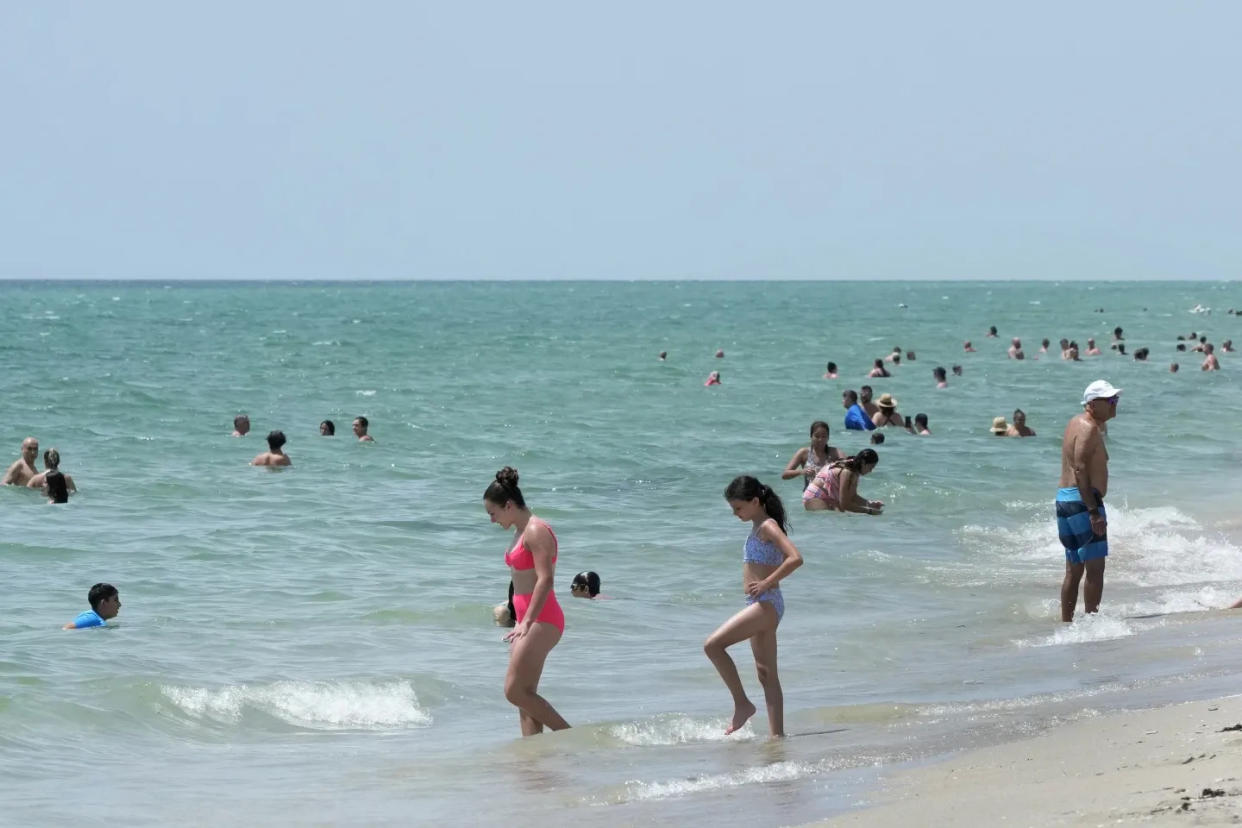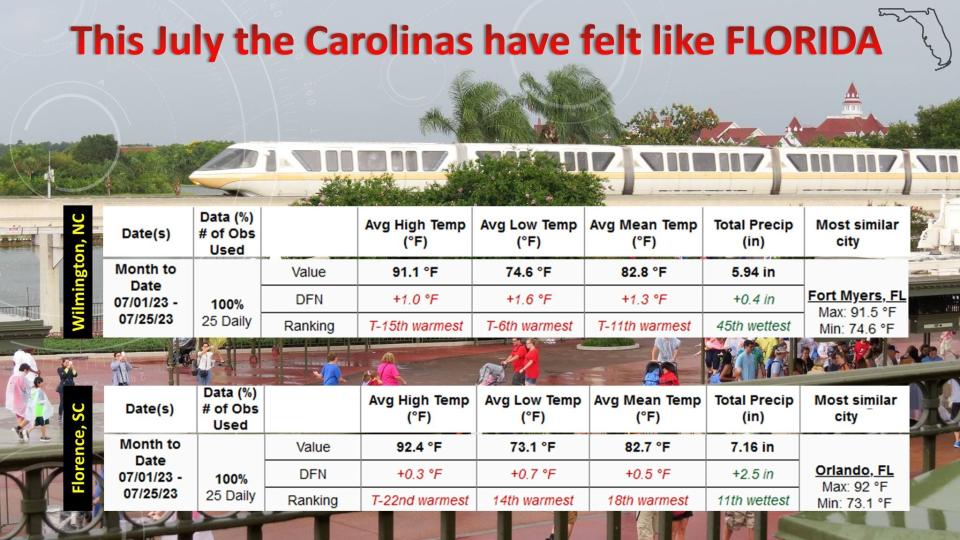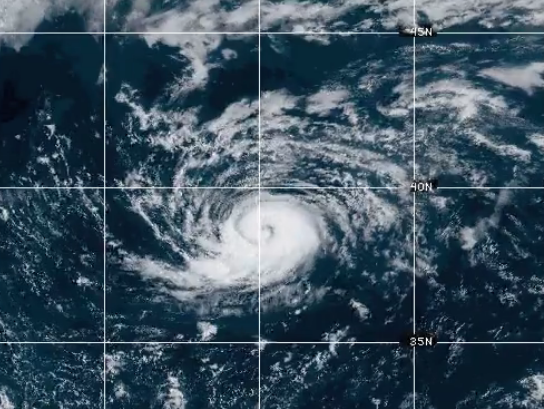July was full of warm temperatures, hot ocean water and pop-up storms. Was it unusual?

July was a month full of storms and humid days in the Wilmington area.
But was it unusually wet or hot?
While people might remember seemingly dodging fast-moving storms a lot last month, July wasn't meteorologically much different than a typical July, according to the National Weather Service's Wilmington office.
"Pretty average for a July for us here," said meteorologist Mark Bacon.
Rain was recorded nine of the first 10 days in July at the Wilmington International Airport, where the weather service's office and official rain gauge for the Port City are located. More moisture fell another 10 days last month. While some were light or just trace amounts of precipitation, others were deluges, headlined by 1.37 inches that fell July 6.
But when the airport didn't see much or any rain, many other areas in the Cape Fear region did − and in significant amounts. Local weather stations on July 5 reported 1.21 inches of rain in St. James near Southport and more than 2 inches near Masonboro Sound in Wilmington. That same day the airport saw 0.04 inches. Four days later, Watha in Pender County reported 1.26 inches of rain and Holden Beach saw 0.63 inches. The Port City's airport saw 0.2 inches.

Bacon said having rainfall differences, even quite significant ones, between areas isn't unusual. That's especially true when the summer heat can impact the intensity and movement of storm cells. Columbus County, for example recently saw more than 6 inches of rain, while areas closer to Wilmington saw much less or none at all. Another example occurred May 19 when parts of Leland saw more than 12 inches of rain. The airport recorded 4 inches from the coastal low.
For July, Wilmington recorded 6.94 inches of rain, just slightly above the monthly normal of 6.86 inches. Even the nearly 10 consecutive days of rain early in the month were rather pedestrian. According to the weather service, the most consecutive days of precipitation Wilmington has seen was in 2018 when it rained for 14 consecutive days between July 22 and Aug. 4. That was the third time since the late 19th century that the Port City has seen that many consistent days of rain.
FISHING FOR ANSWERS As flounder numbers flounder, NC fishermen stew over short recreational season
That helped make September 2018 the wettest month on record, with more than 24 inches of rain falling thanks to Hurricane Florence. That also was a major factor in 2018 being the wettest year on record in Wilmington, with more than 102 inches of precipitation.
Through the first seven months of 2023, Wilmington has received 32.61 inches of rain. The normal amount through July 31 is 31.39 inches.
Steamy waters could help fuel tropical storms
While the humidity helped super charge the temperature on some days, the hottest temps recorded at the Wilmington airport topped out at 95 degrees on three days last month. The lowest high was 85, recorded on July 22. The lowest low was a comfortable 70, recorded on the first day of the month. The average temperature in Wilmington last month was nearly 83 degrees, above the normal of 81.5 degrees for July. The average high was nearly 91 degrees, 1 degree warmer than normal.
The air wasn't the only thing that was warm in the Cape Fear region last month. Ocean temperatures continued to sizzle throughout the month, fed by the Gulf Stream pulling extremely warm water up from Florida and the Caribbean. The water temperature at Wrightsville Beach was 84.4 degrees on Tuesday. The average for July is 81.9 degrees and 83.1 degrees for August.
HOT TAKE As the tropics continue to sizzle, what will the rest of 2023 hurricane season look like?

The hot ocean temperatures have some researchers worried that the upcoming heart of hurricane season, roughly mid-August through September, could be a busy one if the warm waters and hot temperatures − fueled by climate change − support the development of bigger and more powerful hurricanes. That could occur even though tropical storm development is usually hampered when there are El Niño weather conditions like we have now.
"While we're about 1/3 of the way done with the season, we've got about 95% of seasonal activity to go from a historical perspective," Colorado State University hurricane researcher Phil Klotzbach told USA TODAY on Tuesday.
According to the National Hurricane Center, there have been four storms − one which reached hurricane strength − so far this season. None have threatened the mainland U.S.
Hurricane season runs June 1 through Nov. 30.
Reporter Gareth McGrath can be reached at GMcGrath@Gannett.com or @GarethMcGrathSN on Twitter. This story was produced with financial support from 1Earth Fund and the Prentice Foundation. The USA TODAY Network maintains full editorial control of the work.
This article originally appeared on Wilmington StarNews: July weather in Wilmington humid with hot ocean water, pop up showers

